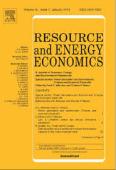
To be relevant to developing countries, green growth must be reconciled with the two key structural features of natural resource use and poverty in these countries. First, primary products account for the majority of their export earnings, and they are unable to diversify from primary production. Second, many economies have a substantial share of their rural population located on less favored agricultural land and in remote areas, thus encouraging “geographic” poverty traps. If green growth is to be a catalyst for economy-wide transformation and poverty alleviation in developing countries, then it must be accompanied by policies aimed directly at overcoming these two structural features. Policies and reforms should foster forward and backward linkages of primary production, enhance its integration with the rest of the economy, and improve opportunities for innovation and knowledge spillovers. Rural poverty, especially the persistent concentration of the rural poor on less favored agricultural lands and in remote areas, needs to be addressed by additional targeted policies and investments, and where necessary, policies to promote rural-urban migration.
The green growth transition will be large, system-wide and structural. In other words, a new industrial revolution. This will require new green growth policies that foster economic growth and development while ensuring that natural assets continue to provide the resources and environmental services on which our well-being relies (OECD, 2011). More and better evidence is needed to support the design of effective green growth policies and to understand their impact on the economy. This policy brief summarises the main policy implications of a two-year research programme, sponsored by the Global Green Growth Institute (GGGI), which aimed to contribute to the growing evidence base.
A multitude of initiatives, networks and organisations have adopted the concept of ‘green growth’ in recent years, in particular following the 2012 Rio+20 Conference on Sustainable Development. New and innovative concepts and approaches to green growth have been designed and tested in the field. In this context, the Donor Committee for Enterprise Development (DCED), through its Green Growth Working Group (GGWG) decided to contract an external organisation to take stock of different members’ environmentally sound and climate friendly private sector development initiatives over the past three years. The objective of this stocktaking report is to provide insight into the main trends related to green private sector development, identify different approaches to green growth in PSD initiatives, and point out emerging lessons.
This report summarises the findings of a project on green entrepreneurship in Tunisia financed by German international cooperation. The two-year project (2013/2014) was implemented by the Deutsche Gesellschaft für internationale Zusammenarbeit (GIZ) within the framework of the programme for entrepreneurship and innovation (PAEI). A series of training courses were offered to a selected group of potential multipliers of the green business concept: local consultants, support organisations and college teachers, all already active in the promotion of entrepreneurship in general. They were trained by national and internal consultants. Over the two years, they built a strong network of promoters of green entrepreneurship and came up with an action plan for the time after the end of the German funded project.
